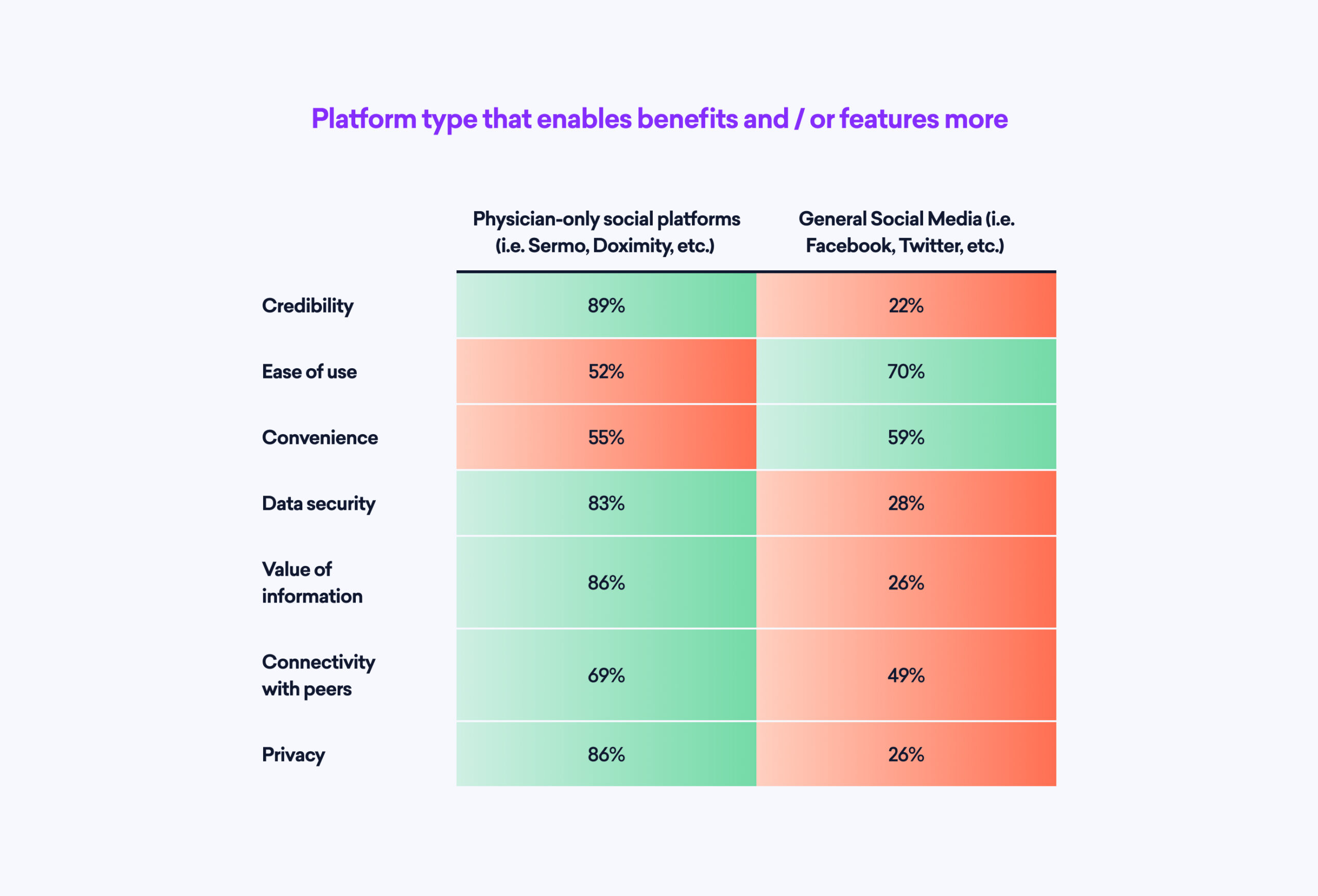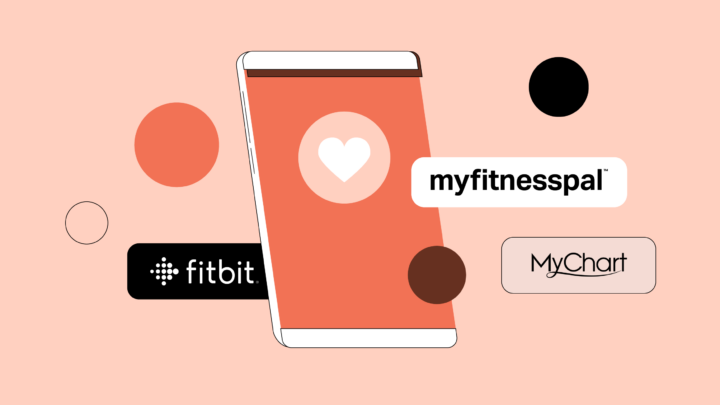
For years, physician social media engagement was slowly but steadily climbing. But then, COVID-19 completely changed the way the world communicated, including a substantial rise in the number of physicians engaging through social channels. In 2021, Sermo’s platform grew +15% in unique logins and users spent an additional +28% of time on the platform.1
However, not all social platforms are created equally.
In an industry committed to medical innovation, physician-only social platforms offer healthcare organizations the best avenue to interact with and influence healthcare professionals. Here are four myths that may be preventing you from engaging with your HCP audience on social platforms they already use and trust.
Myth 1: All social media platforms can target your ideal healthcare stakeholders
Social media’s power lies in its ability to connect people quickly and easily across the globe. However, consumer platforms drive a variety of general conversations across all topics and industries, not specifically healthcare.
Given the increased focus on user privacy, many general social channels are now moving away from offering hyper-targeting capabilities to healthcare audiences. These new limitations can impact your ability to effectively engage HCPs, including Google’s inevitable removal of third-party cookies and Meta’s (Facebook’s parent company) targeting updates where they recently removed certain health-related options in 2022.
General platforms also do not verify the medical credentials of those claiming to be physicians on their platform, so you could be wasting money on ad impressions and engagements outside of your target audience.
On the other hand, physician-only platforms allow you to segment audiences and source insights directly from your target list—enabling more personalized physician engagement experiences that make a real impact. HCPs come to Sermo for secure and professional healthcare content, making them more receptive to your ads. Sermo also triple verifies physicians to ensure only currently licensed and credentialed healthcare professionals can post and engage with your content.
Pro tip: Partner with a trusted platform to deliver content specific to your audience’s practice, specialty, and patient needs.
Sermo targeting capabilities:
- Target physicians in +95 specialties and +150 countries
- Specify audience by country, state, region & zip code
- List match: reach high-priority physicians based on NPI
- Triggered Messaging: reach physicians who are taking specific actions on Sermo, such as rating a drug or talking about a particular topic
- Dynamic targeting: continually hone your targeting criteria to reach new physicians over the length of your campaign
Myth 2: HCPs prefer general social platforms
Physicians, just like us, are increasingly using social media both personally and professionally. More than half of HCPs use social media for professional reasons, with those in emerging markets and LATAM being the most active for this purpose. Reasons HCPs use social media include staying up to date on medical news, connecting with peers, and sharing knowledge.
While general social media channels may seem more “convenient,” HCPs believe physician-only platforms offer more credibility, security, privacy, and valuable information. This offers a great opportunity to align your message in a trusted environment.
“Because [Sermo] is physician-to-physician, you go there to lose yourself in medicine”
Dr. Farag, OB/GYN & Sermo Medical Advisory Board Member
“Sermo is the future of doctors’ interactions. And it’s getting better and better.”
Massimo Lanzaro, Psychiatrist, Italy

Myth 3: All social media platforms offer the same quality of engagements
Ad spending on social is expected to rise to $225B by 2024, accounting for 26.5% of all advertising. This makes maximizing physician engagement on these social platforms more important than ever; however, the social landscape is ever-changing.
Our secure platform is made for physicians looking to explore medical content from a trusted source—70% of Sermo conversations are medical, making our platform full of contextually relevant topics for healthcare professionals.
The technology fosters innovative engagement and insight solutions with tactics like polling, open commenting, liking, sharing, and more. Leveraging sponsored tactics that are built to mirror how physicians engage with one another creates a native engagement experience for users.
- 89% of physicians trust the information they see on Sermo
- 93% of physicians learn new things on Sermo about medicine that benefits their practice
Myth 4: Social platforms are not safe or secure
It is well documented that social media is a source of health misinformation. Choosing a social platform with built-in safeguards—like triple-verification, a strict code of conduct, and dedicated content monitoring—maintains the sense of community users expect from social platforms while ensuring your message is surrounded by trusted and contextually relevant medical content.
Data security is essential for healthcare. The same is true for healthcare-related social media. With +20 years of healthcare innovation and tradition, Sermo guarantees data and program security so you can be 100% confident you’re getting trusted insights and interactions from fully verified HCPs.
Pro tip: Sermo has 24/7 monitoring of all conversations to ensure only reputable content is posted.
- 76% of EU5 HCPs are skeptical about general social media data security
Lean on physician-only platforms to deliver the highest-quality needle-moving engagements
We turn physician experience, expertise, and observations into actionable insights for the global healthcare community. Engaging with more than 1 million HCPs across 150 countries, we provide physicians with a social platform that fosters impactful peer-to-peer collaboration & discussions about issues that are important to them and their patients. Sermo offers on-demand access to physicians via a suite of proprietary technology to provide business intelligence that benefits pharmaceutical, healthcare partners and the medical community at large.
Interested in more? Check back any time and follow us on Facebook, Twitter, and LinkedIn for the latest and greatest in physician insights.














